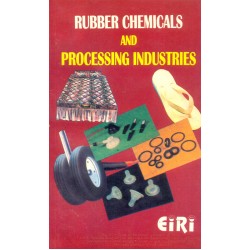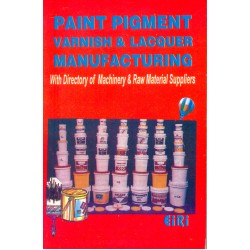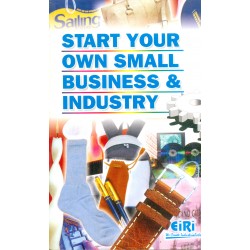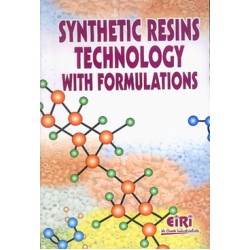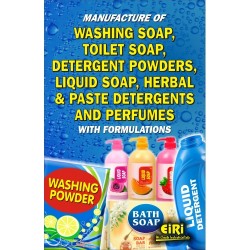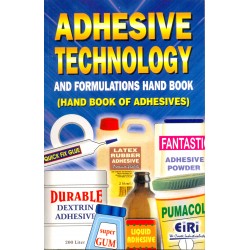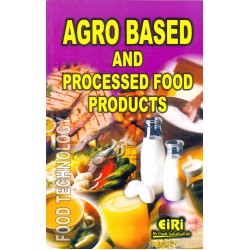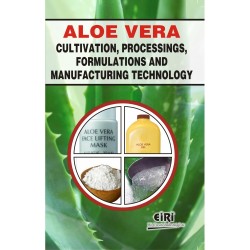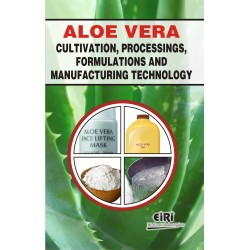Modern Inks Formulae and Manufacturing Industries (Hand Book)

- More than 40 years of experience
- Managed by expert industrial consultants
- ISO 9001-2015 Certified
- Registered under MSME, UAM No: DL01E0012000
- 24/5 Research Support
Get your quesries resolved from an industry expert. Ask your queries before report or book purchase. - Custom Research Service
Speak to the our consultant to design an exclusive study to serve your research needs. - Quality Assurance
All reports are prepared by highly qualified consultants & verified by a panel of experts. - Information Security
Your personal & confidential information is safe & secure.
MODERN INKS FORMULAE AND MANUFACTURING INDUSTRIES
CHAPTER 1
Introduction
Elements of Ink
The nature of Printing Inks
Visual characteristics of inks
The colour of inks
The transparency and opacity of printing inks
The gloss of printing inks
Flexographic and Gravure Inks
Lithographic and letterpress inks
The Drying Characteristics
Absorption during
Oxidation drying
Evaporation drying
Chemical drying
The adhesive nature of printing inks
The resistance properties of printing inks
Light fastness
Heat resistance
Abrasion resistance
Product resistance
Radiation induced drying
CHAPTER 2
Colour Matching
Introduction
Practical Procedure in Colour Matching
The operation of printing
Ink
Paper
Printing Surface
Printing Conditions
Colour Pattern
The Pattern
Wet Ink Samples
Printed Pattern
Matching Procedure
Limitations
Tests on the pattern
Matching Details
Final Adjustments
CHAPTER 3
Raw Materials
Pigments
Yellow pigments
Diarylide Yellows
Ironoxide yellows
Tartrazine yellow lake
Chrome yellows
Cadmium yellows
Fluorescent yellow
Orange Pigments
DNA Orange
Pyrazolone orange
Diarylide orange
Fast Orange F2G
Benzimidazolone Orange HL
Ethyl Lake Red C
Red Pigments
Para Reds
Toluidine Red
Carmine F.B.
Naphthol Reds and Rubines
Permanent Red FRR
Bordeaux FRR
Rubine Reds
Lithol Reds
BON Red
Lithol Rubine 4B
BON Maroon
Rhodamine 6G
Lake Red C
BON Arylamide Red
Quinacridone Magentas
Copper Ferrocyanide Pink
Benzimidazolone Carmines and Reds
Azo Magenta G
Anthraquinone Scarlet
Madder Lakes
Pigment Blue
A Brief Introduction
Types Of Blue Pigments Available
Pigment Blue 15.0 (Alpha Blue)
Pigment Blue 15.1 (Alpha Blue)
Pigment Blue 15.2
Pigment Blue 15.3
Pigment Blue 15.4
Green Pigments
Phthalocyanine Greens
PMTA Greens
Violet pigment
Brown pigments
Diazo Brown
Benzimidazolone Brown HFR
Fluorescent Pigment Colors
Black Pigments
White Pigments and Extenders
White Pigments
Extender
Pearlescent Materials
Fluorescent Pigments
Dyestuffs
Acid Dyes
Basic Dye
Auramine
Diarylmethyaniline Yellow
Uses
Rhodamine 6G
Rhodamine B
Victoria Blue
Uses
Methyl Violet
Solvent Dyes
CI Solvent Yellow 19 No. 13900:1
Manufacturing Methods
Uses
Derivation
CI Solvent Orange 45 No. 11700: 1
Manufacturing Methods
Uses
Derivation
CI Solvent Red 8 No. 12715
Manufacturing Methods
Induline (spirit soluble)
Uses
Manufacturing Methods
Properties and Applications
Nigrosine (spirit soluble)
Properties
Manufacturing Methods
Properties and Applications
Uses
Nigrosine (free base)
Properties
Uses
Disperse Dyes
C1 Disperse Yellow 3 No. 11855
Properties
Uses
Structure
CI Disperse Red 4 No. 60755
Properties
Uses
Structure
CI Disperse Blue 3 No. 61505
Properties
Uses
Structure
CI Disperse Red
No. 6075
Properties
Uses
Oils
Drying Vegetable Oils
Linseed oil
Tung oil (China wood oil)
Oiticica oil
Dehydrated castor oil
Other oils
Segregated oils
Marine oils
Semi-drying oils
Soya bean oil
Non-drying oils
Mineral oils
News ink oils
Non-drying vegetable oils
Natural Resins
Rosin
Natural Resin
Shellac
The formula of shelloic acid
Manila copal
Asphalts
Starch and dextrin
Gum Arabic
Synthetic Resin
Pure phenolic resins
Rosin-modified phenolic resins
Application & Uses
Pigment interactions
Hard resin interactions
Film-forming properties
Hydrocarbon resins
Polystyrene resins and copolymers
Terpene resins
Silicone resins
Alkylated urea formaldehyde resins
Alkylated melamine formaldehyde resins
Polyamide resins
Poly (amide imide) resins
Chlorinated rubber
Cyclised rubber (isomerised rubber) (Resiprene)
Application fields
Vinyl resins
Polyvinyl alcohol
Ketone resins
Acrylic resins
Epoxide resins
Polyurethane resin
Phenolic resin
Polyisocyanates and polyurethanes
Nitrocellulose, N/C (Cellulose nitrate CN)
Ethyl cellulose
Ethyl hydroxyethyl cellulose (EHEC)
Cellulose acetate propionate (CAP)
Cellulose acetate butyrate (CAB)
Sodium carboxymethyl cellulose (CMC)
Solvents
Types of Solvent
Hydrocarbon Solvents
Low boiling petroleum distillate-alipatic
White spirt
Uses of white spirit
Paraffin oil (kerosene)
Examples of Solvent
The Solution, Solubility and Solvation
Uses of Solvent
High boiling petroleum distillates-aliphatic
Hydrocarbon solvents-naphthenic
Aromatic hydrocarbons
Toluene (toluol)
Xylene (xylol)
High boiling aromatic solvents
Alcohols
Glycol Ethers
Ketones
Boiling Points and Solubility
Plasticisers
Waxes
Fully refined paraffin wax
Petrolatum or petroleum jelly
Microcrystalline waxes
Ceresin wax
Montan wax
Formulation and mechanisms of waxes in coatings
Drier
Paste Driers
Miscellaneous additives
Chelating Agents
Antioxidants
Surfactants
Anionic surfactants
Cationic surfactants
Non-ionic surfactants
Amphoteric surfactants
Deodorants and Reodorants
CHAPTER 4
Waxes and Additives
Introduction
Generic wax materials
Natural Waxes
Beeswax
Carnauba Wax
Lanolin
Miscellaneous Natural Waxes
Petroleum waxes
Micro-crystalline waxes
Mineral Waxes
Ceresin Wax
Ozokerite
Synthetic Waxes
Polyethylene Waxes
Polyethylene Glycols
Halogenated Hydrocarbon Waxes
CHAPTER 5
Typographic Inks
Harder-drying book and periodical inks, Jobbing inks
Platen Inks
Inks for cylinder machines
Jobbing Inks
Quick-setting Inks
Inks for process coated paper
Inks for banks, bonds, grease-proof papers, carton boards
Process Inks
Print down yellow
Transparent yellow
Magenta (Red)
Black
Cyan four-colour blue
Three-colour blue
CHAPTER 6
Printing Inks
General Requirements
Manufacturing Process
Mixing
Milling
Filtration
Ink Properties
Types of printing inks
Quick-Set Inks
Heatset inks
Moisture-Set Inks
Radiation-Curing Inks
High-Gloss Inks
Metallic Inks
Magnetic Inks
Fluorescent Inks
Scuff-Resistant Inks
Printing Requirements
Letterpress
Offset Lithography
Flexography
Gravure
Ink-Jet Printing
Copperplate and Die Stamping
Electrostatic Printing
Ink is manufactured in two stages
Step 1 - Varnish manufacture
Oleoresinous varnish manufacture
Non-oleoresinous varnish manufacture
Step 2 - Pigment dispersal
Three roll mills
Bead Mills
Cavitation Mixers
Composition of inks
Letterpress ink for newspaper
Lithographic ink for paper
U.V. curing lithographic ink for paper
The manufacture of oleo-resinous systems
Varnish manufacture
Flow pattern in practical terms
Deaeration and potting
The manufacture of polymer/solvent systems
Varnish manufacture
Cavitation mixer
Rotor/stator mixer
Storage and handling
Manufacture of additives
Liquid ink manufacture
Ball mills
Bead Mills
Chips
Pigment ‘chip’ manufacture
Pigment Production Technology
Manufacture of dye-based inks
Mixing Equipment
Butterfly mixers (Change pan)
Rotor and stator high speed mixers
High-speed impeller mixers
High Speed Mixers
The ‘star’ impeller type
The high-speed disperser
The fixed or on-line mixer
High-speed mixing
Typical uses and applications
Milling Equipment
Three-roll mills
Construction
Development of single cast rollers
Bead mills or stirred ball mills
Ball Mill
Vertical Bead Mill
Pin Type Bead Mill
Turbo Bead Mill
Disc Type Bead Mill
Open sieve mill
Closed sieve mill (Dupont and Draiswerke)
Developed by Herr Durr and Herr Engels of Draiswerke GmbH, this major
John mill (Netzsch GmbH)
Tex mill (Draiswerke GmbH) (see Fig. 12.23)
Dyno mill (Willy A Bachofen Ag)
STS mill (Draiswerke GmbH)
Boa 500 mill (Buhler Brothers Ltd)
Co-ball mill (Fryma Ag)
Manufacture of Newspaper Inks
Oil handling
Production method
Handling and Storage of Inks
Ink Cartridge Handling Precautions
Handling precautions for replacing ink cartridges
Consumption of ink
CHAPTER 7
Formulations
Considerations governing Choice of Pigments
Choice of Pigments
The Role of Water
Ink Vehicles
Linseed Oil based Black Offset Litho
Soap Carbon Printing Yellow Offset Litho
General Purpose Hard Drying Red Offset Litho
Summary of general consideration
Damping Water and the Ink
Ink Consistency
Ink Drying
Drier Absorption
Letterpress Ink Formulation
Platen ink for absorbent papers
Cylinder press ink for uncoated papers
Quick-set inks for coated paper
Letterpress ink drying by oxidation
Water-reducible inks
Process inks
Process magenta letterpress
Newspaper coloured inks
Rotary black inks for newspapers
Formula A: General-purpose low mist black
Formula B: Ink rail
Formula C: Page-Pak
Formula D: Keyless inking (indirect flexo)
Formula E: Flat-bed rotary
Formula F
Use of refined oils
CHAPTER 8
Publication Inks, Cork tipping Inks, Carton Inks and their Formulations
Paper in publication printing
Gloss and absorbency
Formulation requirements
Easily dispersible pigments for publication gravure inks
Inks for catalogue printing
Typical formulation of a catalogue ink
Packaging inks for paper and board Labels
Typical fast-drying formula for labels
Typical formula of a chip-based non-curl label ink
Typical co-solvent polyamide ink
Metallic label inks Formula
Bronze ink
Paper wrapper inks
Inks for cork tipping
Carton Inks
Heat-resistant carton ink Formulation
Heat seal resistant varnish Formulation
Metallic bronze gravure ink for cartons
Foil inks
Virgin foil
Formulation for lightweight aluminium foil
Foil laminates
Foil board laminates
Inks for polyethylene film
Ink based on co-solvent polyamide resin
Ink based on alcohol-soluble polyamide resin:
Inks for treated polypropylene films
White ink for treated side of co-extruded polypropylene:
Red ink for pearlisedopp
Coated polypropylene films
Yellow ink for printing on coated polypropylene film
Cellulose films
Main application
White ink for surface printing on N/C coated films
Polyester films
Red ink for reverse print and lamination on uncoated polyester film
Nylon films
Vinyl films
Metallised films
Wall coverings
Inks for paper
Typical formula for a gravure wallpaper ink
Vinyl coated wallcoverings
Typical formula of a vinyl wallcovering gravure ink
Typical gravure/flexo wall-covering ink
Expanded polyethylene
Decorative wall panels
CHAPTER 9
Photogravure Inks for Three and Four colour Reproduction
Introduction
Black Inks
Coloured and Extender Inks
Metallic Gravure Inks
Gravure Overprint Varnishes
CHAPTER 10
Screen Process Inks
Introduction
Poster Inks
Gloss Poster Inks
CHAPTER 11
Ball-Point Pen Inks
Ink Components
Innovations in Ink
Additive Assistants
Raw Materials
The Manufacturing Process
Making the ink
Stamping and forming
Molding the housing
Ink filling and assembly
Final assembly, packaging and shipping
CHAPTER 12
Testing of Finished Inks
Short Term Tests
Longer Term Tests
Short Term Tests
Consistency (Letterpress and Litho Inks)
Dispersion
Scale Comparisons of Grinding Gauges
Hue and Strength
Short Term Tests on Other Types of Inks
Liquid Inks
News Inks
Silk Screen and Die-stamping Inks
Longer Term Tests
Drying Time
Automatic Drying Time Testers
Skinning time
Setting Time
Strength (Concentration of pigment)
Hue: Instrumental Measurements
Gloss
Density and Specific Gravity
CHAPTER 13
Flexography
Ink Fountain
Printing Unit
Plates
Rubber Plates
Outfeed Section
Inks and Substrates
Paper and Paperboard
Non-Paper Substrates
Press Configurations
Sheetfed Flexography
Hybrid Flexographic Presses
Flexo Gravure
Offset Flexo
Advantages
Disadvantages
Designing for Flexography
The Flexo-printing Process
Platemaking
Printing
Understanding the key flexographic label printing press components
Feed & Unwind Station
Printing station
Drying Station
Die Cutting & Converting
Outfeed and Rewind
Types of flexographic label press
In-Line Press
Central Impression Press
Stack Press
CHAPTER 14
Lithographic Inks
Nature of the process
Formulation of Lithographic ink
Characteristics of Litho Inks
Film thickness considerations
Drying Mechanisms
Restrictions of the process
Penetration
Oxidation
Quickset mechanism
Physical Properties
Viscosity
Solvents
Formula
Formulating Principles
Formula for lithographic offset printing ink
Lithographic Inks
Violets
Greens
White
Extenders
Typical inks and varnishes
Inks and varnishes for sheet-fed paper printing
Sheet-fed label inks
Metallic inks
Small-offset
Inks and varnishes for sheet-fed carton board printing
Ink for sheet-fed impervious substrate printing
Formulation
Inks for web-offset paper printing
Coldset
Heatset
Ink-related problems and their possible solutions
Step-by-Step Troubleshooting Guide:
Check for Physical Damage
Clean the Pump:
Verify Ink Levels
Inspect Tubing
Address Unusual Noises
Tighten Connections
Address Leaks
Perform Test Prints
Consult Technical Documentation
Seek Professional Help
High Dot Gain
Piling
Setoff
Poor Ink Mileage
Litho problems
Rheology problems
Tack problems
Setting and drying problems
Appearance problems
Dot reproduction
Poor Lay
Problem
Problem
Problem
Problem
Problem
Recent and future trends
3D Printing Will Penetrate Into Different Sectors
Expertise In IT Will Be Key
Sheet Fed Digital Printing
Print Security Spending Will Be Fuelled by IoT
Cost Effective Printing Is Of Prime Demand
Security Printing
Cloud Printing
The Role of Automation and Artificial Intelligence
The Personalisation and Customisation Trend
CHAPTER 15
Melamine Laminate Inks, Fluorescent Inks, Textile Inks, Water-based Inks, Non-Impact Printing, Electrostatic Imaging, Inks for jet Print-ing, Speciality Screen Inks
Stamps
Speciality systems
Metallic inks
Colors and Types
Metallic Ink Screenprinting
The Benefits
Bronze inks for film
Aluminium-based inks
Typical formula - vinyl wallcovering simulated gold
Pearlescent inks
Typical formula of pearlescent ink for wall covering
Fluorescent inks
Textile Inks
Reactive Ink
Disperse Ink
Water-based Inks
Acid Inks
Sublimation Inks
Pigment Inks
Non-Impact Printing
Electrostatic imaging
Inks for jet printing
Water-based continllous jet ink
Drop-an-demand (impulse) system
Speciality Screen Inks
Encapsulated perfume inks
Thermochromic inks
Phosphorescent inks
CHAPTER 16
Inks for the Electronics Industry
Printed circuit products
Alkali-soluble rich resist
Two-pack epoxy solder resist
UV solder resist
Thermal-curing notation ink
Membrane switches
Inks for laminated plastics
Inks for wallcoverings
Water-based flexowallcovering ink
H/C free flexolgravure vinyl wallcovering ink
Textile transfer inks
Flexo water-based heat transfer ink
Sterilisation Inks
One-pack steam sterilisation ink
Other colour change and security inks
Security Ink Technologies
Biometric Taggants
Erasable Ink
Coin Reactive Ink
Bleeding Ink
UV Invisible Fluorescent Ink
Thermochromic Ink
Fugitive Ink
Chemical Reactive Inks
Optically Variable Ink
Magnetic Ink
Penetrating or Indelible Ink
Pen Reactive Ink
Secondary Fluorescing Ink
Photochromic Ink
Visible Infrared Ink
Adhesion Promotion Varnish
Security Ink Applications
Bank Notes
Textiles
Packaging
Official Documents
Labels
Pharmaceuticals
Handbags and Cosmetics
Concert, Sports and Lottery Tickets
CHAPTER 17
Offset Printing Inks
Product Introduction of Colour Printing Ink
Properties and Characteristics
B.I.S. Specification
Principles of ink formulation
Offset printing inks (coloured)
Formulae
Blue Plate Inks
Flexographic Inks
Gravure Ink
Automatic Press Red
Manufacture of Offset Printing Inks
Steps to Formulate Offset Printing Inks
Inspect Incoming Ink
Agree on a Specification
Define the Target Color
Measure the Print Substrate
Define the Ink Film Thickness or Anilox Roller
Formulate of Recipe
Create a Drawdown
Measure the Drawdown
Save the Recipe
Evaluate Results
Resolve On-Press Issues
Special offset printing inks
Thermochromic inks
Metallic inks
Mirror inks
Pearlescent inks
Watermark imitation inks
Scented inks
Scratch-off inks
Magnetic inks
Luminescent inks
CHAPTER 18
Stamp Pad Inks
Introduction
B.I.S. specification of ink, stamp pad
Process of manufacture
Glycerine based
Purpal colour (Oil Based)
Procedure
Blue Ink
Procedure
Red Inks
Procedure
Method of manufacture for stamp pad ink
Formula
Flowchart
CHAPTER 19
Rotogravure Printing Ink
Formulations
Flexographic inks
Formulation-1
Formulation-2
Formulation-3 (Bright blue ink)
Formulation-4 (Green ink)
Formulation-5 [Flexographic (Nitro cellulose base) Ink]
Formulation-6 (For Paper, Carton Board, Foil, Cellophone, Cellulose Acetate Film and Other Plastic Films)
Manufacturing process of flexographic ink
Gravure Inks Formulation
Manufacturing process of gravure printing ink
Manufacturing process of vehicle
Dispersion of Pigments
CHAPTER 20
Printing Inks (Flexographic Ink)
Introduction
Formulations
Flexographic Inks
Formulation 1
Formulation-2
Formulation-3 (Bright blue ink)
Manufacturing process of flexographic ink
Gravure Inks Formulation
CHAPTER 21
Duplicating Ink
Introduction
Uses and Application
Properties
Raw Materials
Formulations
Formulation-1
Formulation-2
Formulation-3
Manufacturing Process
CHAPTER 22
Ball Pen Refill Ink
Ball pen inks formulations and processes
formulation - Cold Climate Ball Pen Ink
Temperature Climate Ball Pen Ink Formulation
Tropical Climate Ball Pen Ink Formulation
CHAPTER 23
Plastic Ink (Flexographic & Rotogravure Ink) and Golden Silver Paste
Introduction
Flexography
Gravure
Flexographic Inks
Gravure Inks
Uses and Application
BIS Specification
Formulations
Flexographic Inks
Formulation-1
Formulation-2
Formulation-3 (Bright blue ink)
Formulation-4 (Green ink)
Formulation-5 (Flexographic (Nitro cellulose base) ink]
Formulation-6 (For Paper, Carton Board, Foil, Cellophone, Cellulose Acetate Film and Other Plastic Films)
Formulation-7 (For Plastic Packaging Film)
Flexographic Ink Formulation
Process
Flexographic Ink
Flexographic Ink
Process of Manufacture
Manufacturing process of flexographic ink
Gravure Inks Formulation
Manufacturing process of gravure printing ink
Manufacturing process of vehicle
CHAPTER 24
Printing Machine Roller
Detailed description of the preferred embodiments
Working principle of three roll mill
How to choose a three roll mill
The quality of the roller
Roller size
Feeding method
Influence of parameter setting on grinding effect
Pressure
Temperature
Blade
Tips for finding the best device
CHAPTER 25
Testing of Printing Inks
The Importance of Ink Testing
Methods of Ink Testing for Commercial Printing
Specific Gravity
The Effect of temperature on Viscosity
The effect of ink viscosity on quality
Viscosity Measurement
Viscosity
Penetration
Refraction
Evaporation
Acid Number
Ink Absorbency
Various tests can determine the ink absorbency of a paper
Tung Oil
Detection of Resin
Detection of Rosins
Testing of Pigments
Do organic pigments contain chlorinated aromatics?
Can pigments be a source of cyanide?
Can certain pigments produce aromatic amines?
Solid Prints/Side-by-Side comparisons of Batches
Pigment Strength & Transfer (Wedge Prints)
Dry Rub Resistance
% Volatiles
% Trap
Water Pickup & Contamination
Brookfield Viscosity
Duke Viscosity
Fineness of Grind
Ink Mileage
CHAPTER 26
Printing Inks and Allied Products Standards List
CHAPTER 27
Plant Economics of Ball Point Pen, Refills & Ink
Land & Building
Plant & Machinery
Fixed Capital
Working Capital Requirement/Month
Total Capital Investment
Turn Over/Annum
CHAPTER 28
Plant Economics of Digital Inks
Land & Building
Plant & Machinery
Fixed Capital
Working Capital Requirement/Month
Total Capital Investment
Turn Over/Annum
CHAPTER 29
Plant Economics of Industrial Paint and Inks (Various Types)
Land & Building
Plant & Machinery
Fixed Capital
Working Capital Requirement/Month
Total Capital Investment
Turn Over/Annum
CHAPTER 30
Plant Economics of Offset Printing Inks (Coloured)
Land & Building
Plant & Machinery
Fixed Capital
Working Capital Requirement/Month
Total Capital Investment
Turn Over/Annum
CHAPTER 31
Plant Economics of Printing Inks (Flexo Graphic)
Land & Building
Plant & Machinery
Fixed Capital
Working Capital Requirement/Month
Total Capital Investment
Turn Over/Annum
CHAPTER 32
Plant Economics of Printing Inks (Flexo, Roto, Offset and Screen)
Land & Building
Plant & Machinery
Fixed Capital
Working Capital Requirement/Month
Total Capital Investment
Turn Over/Annum
CHAPTER 33
Plant Economics of Printing Inks on HDPE Laminated or Unlaminated Bags
Land & Building
Plant & Machinery
Fixed Capital
Working Capital Requirement/Month
Total Capital Investment
Turn Over/Annum
CHAPTER 34
Plant Economics of Rotogravure Printing (For Flexible Packaging)
Land & Building
Plant & Machinery
Fixed Capital
Working Capital Requirement/Month
Total Capital Investment
Turn Over/Annum
CHAPTER 35
Plant Economics of Screen Printing Inks
Land & Building
Plant & Machinery
Fixed Capital
Working Capital Requirement/Month
Total Capital Investment
Turn Over/Annum
How to Make Project Report?
Detailed Project Report (DPR) includes Present Market Position and Expected Future Demand, Technology, Manufacturing Process, Investment Opportunity, Plant Economics and Project Financials. comprehensive analysis from industry covering detailed reporting and evaluates the position of the industry by providing insights to the SWOT analysis of the industry.
Each report include Plant Capacity, requirement of Land & Building, Plant & Machinery, Flow Sheet Diagram, Raw Materials detail with suppliers list, Total Capital Investment along with detailed calculation on Rate of Return, Break-Even Analysis and Profitability Analysis. The report also provides a birds eye view of the global industry with details on projected market size and then progresses to evaluate the industry in detail.
We can prepare detailed project report on any industry as per your requirement.
We can also modify the project capacity and project cost as per your requirement. If you are planning to start a business, contact us today.
Detailed Project Report (DPR) gives you access to decisive data such as:
- Market growth drivers
- Factors limiting market growth
- Current market trends
- Market structure
- Key highlights
Overview of key market forces propelling and restraining market growth:
- Up-to-date analyses of market trends and technological improvements
- Pin-point analyses of market competition dynamics to offer you a competitive edge major competitors
- An array of graphics, BEP analysis of major industry segments
- Detailed analyses of industry trends
- A well-defined technological growth with an impact-analysis
- A clear understanding of the competitive landscape and key product segments
Need Customized Project Report?
- Ask for FREE project related details with our consultant/industry expert.
- Share your specific research requirements for customized project report.
- Request for due diligence and consumer centric studies.
- Still haven't found what you're looking for? Speak to our Custom Research Team
About Engineers India Research Institute:
Our Approach
- Our research reports comprehensively cover Indian markets (can be modified as per your country), present investigation, standpoint and gauge for a time of five years*.
- The market conjectures are produced on the premise of optional research and are cross-accepted through associations with the business players
- We use dependable wellsprings of data and databases. What's more, data from such sources is handled by us and incorporated into the report
Why buy EIRI reports?
- Our project reports include detailed analysis that help to get industry Present Market Position and Expected Future Demand.
- Offer real analysis driving variables for the business and most recent business sector patterns in the business
- This report comprehends the present status of the business by clarifying a complete SWOT examination and investigation of the interest supply circumstance
- Report gives investigation and top to bottom money related correlation of real players/competitors
- The report gives gauges of key parameters which foresees the business execution






















